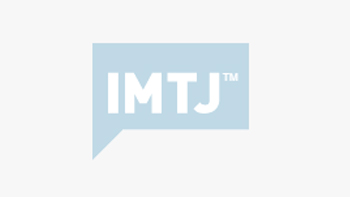Back in May 2008, I blogged on “McKinsey and the medical tourism numbers game…” and commented on their strange way of counting (or not counting) medical tourism numbers.
Back in May 2008, I blogged on “McKinsey and the medical tourism numbers game…” and commented on their strange way of counting (or not counting) medical tourism numbers. Given the latest study on medical tourism numbers, “New study numbers US medical tourists in thousands not millions”, reported in IMTJ, I thought it was time once again to address the thorny issue of….how many medical tourists are there?
Defining the medical tourist
Before you can begin to count medical tourists, you have to be very clear about what it is you are counting. This is one of the greatest areas of confusion in the business sector.
So, what is a medical tourist?
In my view, a medical tourist is someone who travels outside of their own country for surgery or elective treatment of a medical condition. If we apply this narrow definition, we DO NOT include:
- dental tourists
- cosmetic surgery tourists
- spa and wellness travellers
- “accidental” medical tourists (business travellers and holiday makers who fall ill while abroad and are admitted to hospital)
expatriates who access healthcare in a foreign country.
One of the best attempts that I have seen at defining and categorising “health tourism” (as opposed to medical tourism) and its various segments is by Dr Constantine Constantinides – see www.healthtourism8.com.
I will take the liberty of refining and adapting Dr Constantinides approach to develop my own definition and categorisation of health tourism or …let’s call it “Health and Medical Travel”.
Health and Medical Travel embraces and defines the market as a whole. Within Health and Medical Travel, there are some clearly defined market segments:
- Medical tourism (or travel) – someone who travels outside of their own country for surgery or elective treatment of a medical condition. This could be broken down further into sub-segments such as:
1. Infertility tourism (or travel)
2. Stem cell tourism (or travel)
3. Transplant tourism (or travel) - Dental tourism (or travel) – someone who travels outside of their own country for dental treatment be it restorative or cosmetic.
- Cosmetic surgery (or aesthetic) tourism – someone who travels outside of their own country for cosmetic or aesthetic surgery.
- Spa tourism
- Wellness tourism
This definition of Health and Medical Travel obviously excludes the accident medical tourist – the holidaymaker of business traveller falling sick while abroad.
It makes sense to segment markets because different market segments contain different types of consumer with different needs and requiring a different approach in terms of service offering, message and promotional activity. It’s at the core of successful marketing. It’s why many medical tourism businesses fail… because they try to be all things to all patients and fail to understand their markets and consumers.
Counting medical tourists
If you thought defining medical tourists was difficult, try counting them…. Because everyone defines medical tourism differently, none of the numbers make any sense at all and we see massive variation in the numbers quoted.
It doesn’t help that some individuals doing the counting or quoting the numbers may have little experience of healthcare or of running hospitals, so when they come up with a number, they may not realise how ridiculous the number is. Here’s a couple of medical tourism numbers that you may have heard quoted at conferences and in press releases in 2010 and why they don’t make any sense at all:
- The Center for Medical Tourism Researchwas established in 2010 to “increase knowledge in the medical tourism industry”. Last year, it told us that there were 1,120,446 American medical travelers in 2009. These included dental travellers, cosmetic surgery patients but excluded spa and wellness travel. Let’s assume that just one in five of these 1.1 million American medical travellers actually went for hospital treatment. And let’s assume a five day length of stay in hospital. That’s 1.1 million patient days, enough to fill over 3,000 hospital beds every day for a year, enough to fill more than five Bumrungrad Hospitals to bursting 365 days per year. Does that sound at all likely to you? In terms of destinations, the CMTR research also told us that 7.6% (82,000) of these US medical tourists went to the UK and 0.5% (5,546) of these went to Turkey. 82,000 US medical tourists visited the UK last year…….. I am sure that my colleagues in the UK hospital sector would be delighted to welcome this many US patients!
- In a recent news release for “Patients Beyond Borders Focus On Bumrungrad International Hospital”, I read that “during the past decade, more than 3 million patients from 190 countries have traveled to Bumrungrad”. Now…. there’s no denying that Bumrungrad has an impressive share of the international patient market, and they are undoubtedly a leader and trend setter in the sector… but 300,000 international medical travellers a year for the last ten years? If the patient as stated has travelled to Bumrungrad from another country, we can probably assume that they are not flying in for a chest x ray. So, let’s apply the same average length of stay – 5 days. That’s 1.5 million patient days, a year. Hang on…. Bumrungrad only has 554 beds, but they are filling over 4,000 beds with international patients. An amazing achievement.
So, in the two examples above what’s gone wrong? Are the Center for Medical Tourism Research and Patients Beyond Borders trying to mislead us. No. They just haven’t thought through what these numbers mean and haven’t questioned the source data or the basis of their assumptions.
In the first example, it’s a case of very poor sample selection, sample bias, and making projections for the total population based on what people say they may do rather than analysing what they actually do.
In the Bumrungrad example, it’s also a case of “sample error”…..counting the same patient numerous times over. i.e. an international patient at Bumrungrad can get “counted” every time they raise a bill. So, one visit to pharmacy = one visit, one x ray = one visit, one physiotherapy session = one visit. You can easily see how the numbers mount up. (And why the marketing department like them!) There is also the inflation caused by “accidental” medical tourists (business travellers and holiday makers who fall ill while in Thailand and are admitted to Bumrungrad) who get counted as international patients.
So….how many medical tourists actually are there?
Probably a great deal less than you think. But that doesn’t mean that you shouldn’t be in the health and medical travel market. You just need to be very clear about your own definition of your market segment, and never believe what you hear at a conference or read in the press.
Perhaps in my next blog post, I should tell you how many medical tourists I actually think there are..








 ©2024 All rights reserved LaingBuisson
©2024 All rights reserved LaingBuisson 


